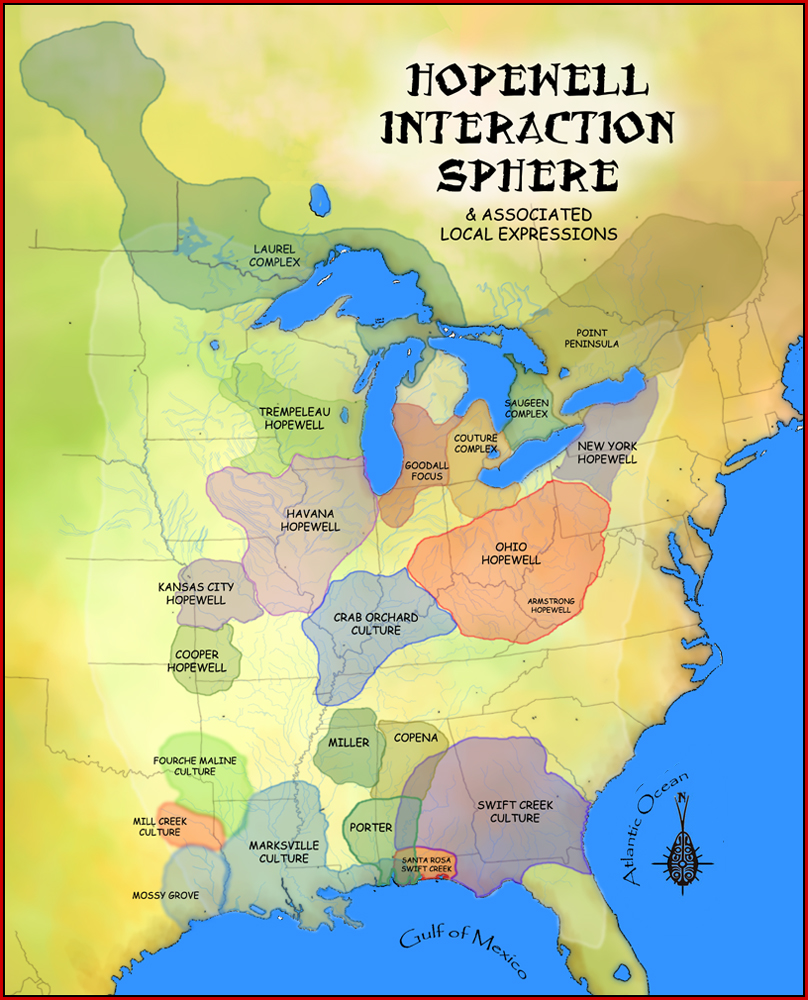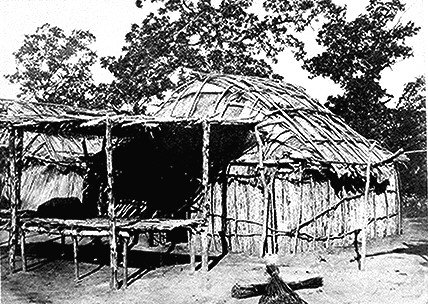|
Niantic People
The Niantic ( ; Nehântick or Nehantucket) are a tribe of Algonquian-speaking American Indians who lived in the area of Connecticut and Rhode Island during the early colonial period. The tribe's name ''Nehântick'' means "of long-necked waters"; area residents believe that this refers to the "long neck" or peninsula of land known as Black Point, located in the village of Niantic, Connecticut. The Niantic people were divided into eastern and western groups due to intrusions by the more numerous and powerful Pequots. The Western Niantics were subject to the Pequots and lived just east of the mouth of the Connecticut River, while the Eastern Niantics became very close allies to the Narragansetts. It is likely that the name Nantucket is derived from the tribe's endonym, Nehantucket. The division of the Niantics became so great that the language of the eastern Niantics is classified as a dialect of Narragansett, while the language of the western Niantics is classified as Mohega ... [...More Info...] [...Related Items...] OR: [Wikipedia] [Google] [Baidu] |
New England
New England is a region consisting of six states in the Northeastern United States: Connecticut, Maine, Massachusetts, New Hampshire, Rhode Island, and Vermont. It is bordered by the state of New York (state), New York to the west and by the Canadian provinces of New Brunswick to the northeast and Quebec to the north. The Gulf of Maine and Atlantic Ocean are to the east and southeast, and Long Island Sound is to the southwest. Boston is New England's largest city and the capital of Massachusetts. Greater Boston, comprising the Boston–Worcester–Providence Combined Statistical Area, houses more than half of New England's population; this area includes Worcester, Massachusetts, the second-largest city in New England; Manchester, New Hampshire, the largest city in New Hampshire; and Providence, Rhode Island, the capital of and largest city in Rhode Island. In 1620, the Pilgrims (Plymouth Colony), Pilgrims established Plymouth Colony, the second successful settlement in Briti ... [...More Info...] [...Related Items...] OR: [Wikipedia] [Google] [Baidu] |
Woodland Period
In the classification of :category:Archaeological cultures of North America, archaeological cultures of North America, the Woodland period of North American pre-Columbian cultures spanned a period from roughly 1000 BC to European contact in the eastern part of North America, with some archaeologists distinguishing the Mississippian period, from 1000 AD to European contact as a separate period. The term "Woodland Period" was introduced in the 1930s as a generic term for prehistoric, prehistoric sites falling between the Archaic period in the Americas, Archaic hunter-gatherers and the agriculturalist Mississippian cultures. The Eastern Woodlands cultural region covers what is now eastern Canada south of the Subarctic region, the Eastern United States, along to the Gulf of Mexico. This period is variously considered a developmental stage, a time period, a suite of technological adaptations or "traits", and a "family tree" of cultures related to earlier Archaic cultures. ... [...More Info...] [...Related Items...] OR: [Wikipedia] [Google] [Baidu] |
Yankee
The term ''Yankee'' and its contracted form ''Yank'' have several interrelated meanings, all referring to people from the United States. Their various meanings depend on the context, and may refer to New Englanders, the Northeastern United States, the Northern United States, or to people from the US in general. Many of the earlier immigrants to the northeast from Ireland, Italy, Poland, and other regions of Europe, used ''Yankees'' to refer to New England English settlers. Outside the United States, ''Yank'' is used informally to refer to a person or thing from the US. It has been especially popular in the United Kingdom, Ireland, South Africa, Australia, and New Zealand where it may be used variously, either with an uncomplimentary overtone, endearingly, or cordially. In the Southern United States, ''Yankee'' is a derisive term which refers to all Northerners, and during the American Civil War it was applied by Confederates to soldiers of the Union army in general. Elsewher ... [...More Info...] [...Related Items...] OR: [Wikipedia] [Google] [Baidu] |
Kickapoo People
The Kickapoo people (; Kickapoo language, Kickapoo: Kiikaapoa or Kiikaapoi; ) are an Algonquian languages, Algonquian-speaking Native Americans in the United States, Native American tribe and Indigenous people in Mexico, originating in the region south of the Great Lakes. There are three Federally recognized tribe, federally recognized Kickapoo tribes in the United States: the Kickapoo Tribe in Kansas, the Kickapoo Tribe of Oklahoma, and the Kickapoo Traditional Tribe of Texas. The Oklahoma and Texas bands are politically associated with each other. The Kickapoo in Kansas came from a relocation from southern Missouri in 1832 as a land exchange from their reserve there. Around 3,000 people are enrolled tribal members. Another band, the Mexican Kickapoo, Tribu Kikapú, resides in Múzquiz Municipality in the northern Mexico, Mexican state of Coahuila, ending up there after disputes between leaders of rival bands in the tribe caused a schism between followers of the "Kickapoo Prophe ... [...More Info...] [...Related Items...] OR: [Wikipedia] [Google] [Baidu] |
Wigwam
A wigwam, wikiup, wetu (Wampanoag), or wiigiwaam (Ojibwe, in syllabics: ) is a semi-permanent domed dwelling formerly used by certain Native American tribes and First Nations people and still used for ceremonial events. The term ''wikiup'' is generally used to refer to these kinds of dwellings in the Southwestern United States and Western United States and Northwest Alberta, Canada, while ''wigwam'' is usually applied to these structures in the Northeastern United States as well as Ontario and Quebec in central Canada. The names can refer to many distinct types of Indigenous structures regardless of location or cultural group. The wigwam is not to be confused with the Native Plains tipi, which has a different construction, structure, and use. Structure The domed, round shelter was used by numerous northeastern Indigenous tribes. The curved surfaces make it an ideal shelter for all kinds of conditions. Indigenous peoples in the Great Lakes–St. Lawrence Lowlands resided ... [...More Info...] [...Related Items...] OR: [Wikipedia] [Google] [Baidu] |
Ezra Stiles
Ezra Stiles ( – May 12, 1795) was an American educator, academic, Congregationalist minister, theologian, and author. He is noted as the seventh president of Yale College (1778–1795) and one of the founders of Brown University. According to religious historian Timothy L. Hall, Stiles' tenure at Yale distinguishes him as "one of the first great American college presidents." Early life Ezra Stiles was born on in North Haven, Connecticut, to Rev. Isaac Stiles and Kezia Taylor Stiles (1702–1727). His maternal grandfather, Edward Taylor had emigrated to Colonial America from Leicestershire, England, in 1668. Kezia Taylor Stiles died four days after giving birth to Ezra. Stiles received his early education at home and matriculated at Yale College in September 1742, as one of 13 members of the college's freshman class. At Yale, he studied a liberal arts curriculum characterized by an uncertain period of transition between moribund Puritan thought and that of newer thinkers ... [...More Info...] [...Related Items...] OR: [Wikipedia] [Google] [Baidu] |
East Lyme, Connecticut
East Lyme is a New England town, town in New London County, Connecticut, United States. The town is part of the Southeastern Connecticut Planning Region, Connecticut, Southeastern Connecticut Planning Region. The population was 18,693 at the 2020 United States census, 2020 census. The villages of Niantic, Connecticut, Niantic and Flanders, Connecticut, Flanders are located in the town. Geography East Lyme is located in southern New London County, west of Waterford, Connecticut, Waterford and Montville, Connecticut, Montville, east of Lyme, Connecticut, Lyme and Old Lyme, Connecticut, Old Lyme, and south of Salem, Connecticut, Salem. Long Island Sound is to the south. According to the United States Census Bureau, the town has a total area of , of which is land and , or 19%, is water. Villages The town consists primarily of two villages, Flanders and Niantic, Connecticut, Niantic. It is common for the town of East Lyme to be erroneously called "Niantic", due to this side of town be ... [...More Info...] [...Related Items...] OR: [Wikipedia] [Google] [Baidu] |
Woodstock, Connecticut
Woodstock is a New England town, town in Windham County, Connecticut, Windham County, Connecticut, United States. The town is part of the Northeastern Connecticut Planning Region, Connecticut, Northeastern Connecticut Planning Region. The population was 8,221 at the 2020 United States census, 2020 census. History 17th century In the mid-17th century, John Eliot (missionary), John Eliot, a Puritan missionary to the Indigenous peoples of the Americas, Native Americans, established "praying towns", where Native Americans took up Christianity and were expected to renounce their religious ceremonies, traditional dress, and customs. One praying town, called Wabaquasset (Senexet, Wabiquisset), six miles west of the Quinebaug River in present-day Woodstock, was the largest of the three northeastern Connecticut praying towns. In 1675, when King Philip's War broke out, some of the town's Indians, (especially in the southern part of the town) sided with the Mohegans and the English while o ... [...More Info...] [...Related Items...] OR: [Wikipedia] [Google] [Baidu] |
Narragansett (tribe)
The Narragansett people are an Algonquian American Indian tribe from Rhode Island. Today, Narragansett people are enrolled in the federally recognized Narragansett Indian Tribe. They gained federal recognition in 1983. The tribe was nearly landless for most of the 20th century but acquired land in 1991 and petitioned the Department of the Interior to take the land into trust on their behalf. This would have made the newly acquired land officially recognized as part of the Narragansett Indian reservation, taking it out from under Rhode Island's legal authority. In 2009, the United States Supreme Court ruled against the request in their lawsuit '' Carcieri v. Salazar'', declaring that tribes which had achieved federal recognition since the 1934 Indian Reorganization Act did not have standing to have newly acquired lands taken into federal trust and removed from state control. Reservation The Narragansett tribe was recognized by the federal government in 1983 and controls the Nar ... [...More Info...] [...Related Items...] OR: [Wikipedia] [Google] [Baidu] |
King Philip's War
King Philip's War (sometimes called the First Indian War, Metacom's War, Metacomet's War, Pometacomet's Rebellion, or Metacom's Rebellion) was an armed conflict in 1675–1678 between a group of indigenous peoples of the Northeastern Woodlands against the English New England Colonies and their indigenous allies. The war is named for Metacom (alternatively Metacomet), the Pokanoket chief and sachem of the Wampanoag who had adopted the English name Philip because of the friendly relations between his father Massasoit and the Plymouth Colony. The war continued in the most northern reaches of New England until the signing of the Treaty of Casco Bay on April 12, 1678. Massasoit had maintained a long-standing agreement with the colonists and Metacom (), his younger son, became the tribal chief in 1662 after his father's death. Metacom, however, forsook his father's alliance between the Wampanoags and the colonists after repeated violations by the latter. The colonists insist ... [...More Info...] [...Related Items...] OR: [Wikipedia] [Google] [Baidu] |
Lyme, Connecticut
Lyme is a New England town, town in New London County, Connecticut, New London County, Connecticut, United States, situated on the eastern side of the Connecticut River. The town is part of the Lower Connecticut River Valley Planning Region, Connecticut, Lower Connecticut River Valley Planning Region. The population was 2,352 at the 2020 United States census, 2020 census. Lyme is the eponym of Lyme disease. History In February 1665, the portion of the territory of the Saybrook Colony east of the Connecticut River was set off as the plantation of East Saybrook, which included present-day Lyme, Old Lyme, Connecticut, Old Lyme, and the western part of East Lyme, Connecticut, East Lyme. In 1667, the Connecticut General Court formally recognized the East Saybrook plantation as the town of Lyme, named after Lyme Regis, a coastal town in the southwest of England. The eastern portion of Lyme (bordering the town of Waterford, Connecticut, Waterford) separated from Lyme in 1823 and became ... [...More Info...] [...Related Items...] OR: [Wikipedia] [Google] [Baidu] |
Pequot War
The Pequot War was an armed conflict that took place in 1636 and ended in 1638 in New England, between the Pequot nation and an alliance of the colonists from the Massachusetts Bay, Plymouth, and Saybrook colonies and their allies from the Narragansett and Mohegan nations. The war concluded with the decisive defeat of the Pequot. In an event called the Mystic massacre, English colonists of the Connecticut Colony and their allies set the village of Pequot Fort ablaze, blocked the exits, and shot anyone trying to escape. At the end, about 700 Pequots had been killed or taken into captivity. Hundreds of prisoners were sold into slavery to colonists in Bermuda or the West Indies; other survivors were dispersed as captives to the victorious nation. The Treaty of Hartford (1638), Treaty of Hartford of 1638 sought to eradicate the Pequots, Pequot cultural identity by prohibiting the Pequots from returning to their lands, speaking their tribal language, or referring to themselves ... [...More Info...] [...Related Items...] OR: [Wikipedia] [Google] [Baidu] |







